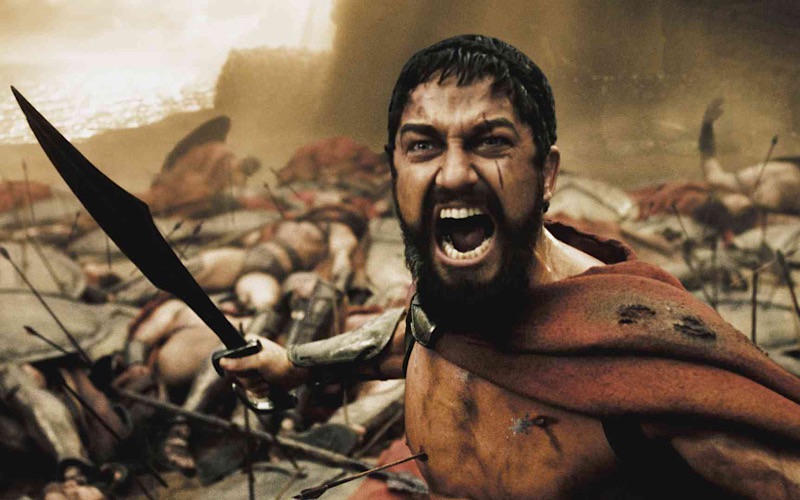Ever pondered upon the identities of the most formidable and resilient warriors throughout history? We share your curiosity, which is why we’ve compiled information about these legendary figures. Exploring the diverse types of ancient warriors and their military accomplishments not only proves fascinating but also prompts important discussions about the human capacity in times of war.
In war, there are no true winners, especially considering the immense losses incurred in conflicts between nations. The aftermath often echoes with repercussions, exemplified by experiences like the Great Depression. Wars contribute to heightened instances of famine, orphaned children, and increased v!olence. Even the soldiers, who bear the brunt of the conflict, become victims themselves. Conditions like shellshock and the profound loss of life and limbs are trag!cally common among them.
Warriors defending their country often achieve heroic feats on the battlefield, demonstrating unwavering loyalty to their fellow countrymen and achieving victory against adversaries. These remarkable individuals secure their place in history alongside their accomplishments, even though their moral character may vary. While it’s valuable to explore the feats of these warriors, understanding their motivations for participating in wars is equally crucial.
Delving into the stories of history’s finest warriors is enlightening. In a world where warfare persists, comprehending the reasons behind conflicts becomes imperative to prevent repeating past mistakes. Although identifying the world’s deadliest warrior remains elusive, we’ve compiled a list of noteworthy names deserving of that title. Below, you’ll find details about the origins, identities, and backgrounds of some of the strongest warriors in history.
Warrior Origin
Various warrior archetypes, including foot soldiers, warlords, conquerors, and military tacticians, have emerged throughout history. Warriors are individuals who hone combat skills as a profession, making it one of the oldest known vocations. Among the earliest warriors were hunters, tasked with providing sustenance for their tribes and defending against external threats. Different warriors excelled in diverse areas, with foot soldiers specializing in ground warfare, navy ships dominating maritime domains, and bowmen evolving into modern snipers proficient in long-range attacks. Fighter pilots, on the other hand, introduced a distinct advantage, disrupting traditional ground-based warfare. The evolution of warriors showcases the adaptability and specialization inherent in this enduring profession.
In ancient times, prowess in combat was synonymous with becoming a skilled warrior. Individuals of considerable strength ascended the ranks, attaining positions such as generals or even kings. These powerful leaders, seeking to expand their influence, employed other warriors to conquer neighboring tribes or countries, giving rise to some of history’s greatest warriors under diverse rulers.
A prime illustration is the knight, a warrior class serving under their king, embodying chivalry and loyalty. Mercenaries, another category, operated independently, offering their services to the highest bidder. This group of warriors opted for payment rather than allegiance to a single leader. Additionally, assass!ns gained prominence as hired k!llers, further diversifying the roles and methods employed by warriors throughout history.
Having explored the origins of great warriors, let’s delve into the annals of history to discover the names of 20 remarkable warriors. Each warrior highlighted below comes with insights into their historical achievements, the era they lived in, and the weapons they wielded, offering a glimpse into their formidable legacy.
20. Tomoe Gozen (c. 1157–1247)
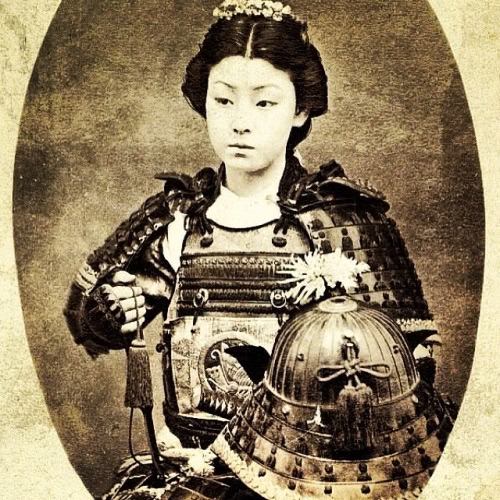
Tomoe Gozen, a legendary figure in Japanese history, was a remarkable onna-bugeisha—an elite female warrior—known for her exceptional martial prowess and bravery. Born around 1157, during the late Heian period, Tomoe served as a samurai under Minamoto no Yoshinaka, a powerful military commander.
Tomoe Gozen distinguished herself in battles, displaying exceptional skill with the sword and bow. Her valor and combat abilities set her apart, and she became a trusted and respected warrior in Yoshinaka’s forces. She actively participated in pivotal conflicts, including the Genpei War (1180–1185), a tumultuous period of warfare between the Taira and Minamoto clans.
One of Tomoe’s most renowned feats occurred during the Battle of Awazu in 1184. Amidst the chaos of the battlefield, she fought fiercely, displaying unparalleled courage. Accounts of her actions describe her capturing enemy heads, demonstrating her martial prowess in the midst of intense combat.
Tomoe Gozen’s legacy extends beyond her martial achievements; her tale reflects the significant role of women in Japanese history, challenging traditional gender norms. Her unwavering courage and skill in battle have immortalized her as a symbol of female empowerment and martial excellence.
Despite the passage of time, Tomoe Gozen remains a captivating and inspirational figure, embodying the spirit of a warrior in an era defined by honor, loyalty, and the clash of mighty clans.
19. Zhuge Liang (181–234)
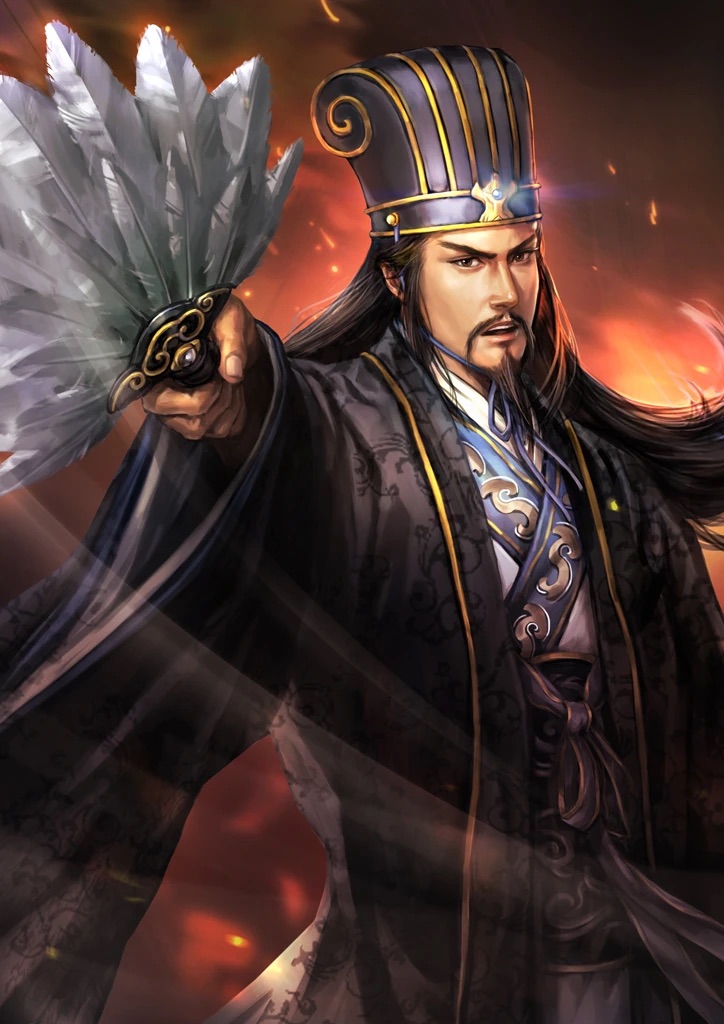
Zhuge Liang, often referred to as the “Crouching Dragon,” was a brilliant strategist and statesman during the Three Kingdoms period in ancient China. Serving as the chief advisor to Liu Bei, he played a pivotal role in the Shu Han state. Zhuge Liang was not only a skilled military commander but also a masterful tactician, known for his deep understanding of warfare and diplomacy.
His most famous achievement is the invention of the “empty fort strategy” during the Battle of Wuzhang Plains, where he successfully deceived the opposing forces led by Sima Yi into thinking the Shu army was stronger than it actually was. Zhuge Liang’s wisdom and foresight earned him respect even from his adversaries.
Despite his strategic brilliance, Zhuge Liang was also known for his humility and dedication to serving the people. His legacy extends beyond the battlefield, encompassing his contributions to governance, agriculture, and the well-being of the populace. Zhuge Liang’s strategic acumen and virtuous leadership continue to be celebrated in Chinese culture, making him a legendary figure in history.
18. Subutai (1175–1248)

Subutai, a brilliant Mongol general and military strategist, was a key figure in the Mongol Empire under Genghis Khan. Known for his exceptional military acumen, Subutai played a crucial role in the conquests that expanded the Mongol Empire across Asia and Europe.
He was a master of unconventional tactics, employing strategies such as feigned retreats and surprise attacks to confound his enemies. Subutai’s campaigns were marked by remarkable speed, adaptability, and a deep understanding of the terrain.
One of his most notable achievements was the invasion of Europe, where he played a pivotal role in defeating formidable opponents like the Cumans, Kievan Rus, and European knights. Subutai’s strategic brilliance and innovative military tactics have earned him a place among history’s greatest military commanders.
17. Spartacus (c. 111–71 BCE)
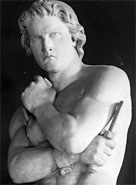
Spartacus, a gladiator and a prominent figure in ancient Rome, led one of the most famous slave uprisings known as the Third Servile War. Born in Thrace, Spartacus was initially enslaved and trained as a gladiator. In 73 BCE, he escaped with a group of fellow gladiators, eventually amassing a formidable army of slaves and free men.
Known for his military skill and leadership, Spartacus inflicted several defeats on Roman forces, raising the concern of the Roman Republic. His rebellion, fueled by a desire for freedom and justice, attracted a diverse following. However, despite early successes, Spartacus faced challenges, including internal divisions and the overwhelming might of Roman legions.
Ultimately, Spartacus’s rebellion was crushed in 71 BCE, leading to his defeat in battle. His life and the Third Servile War have become symbols of resistance against oppression, inspiring countless retellings in literature, film, and popular culture. Spartacus’s legacy endures as a symbol of the fight for freedom and justice against oppressive regimes.
16. Napoleon Bonaparte (1769–1821)
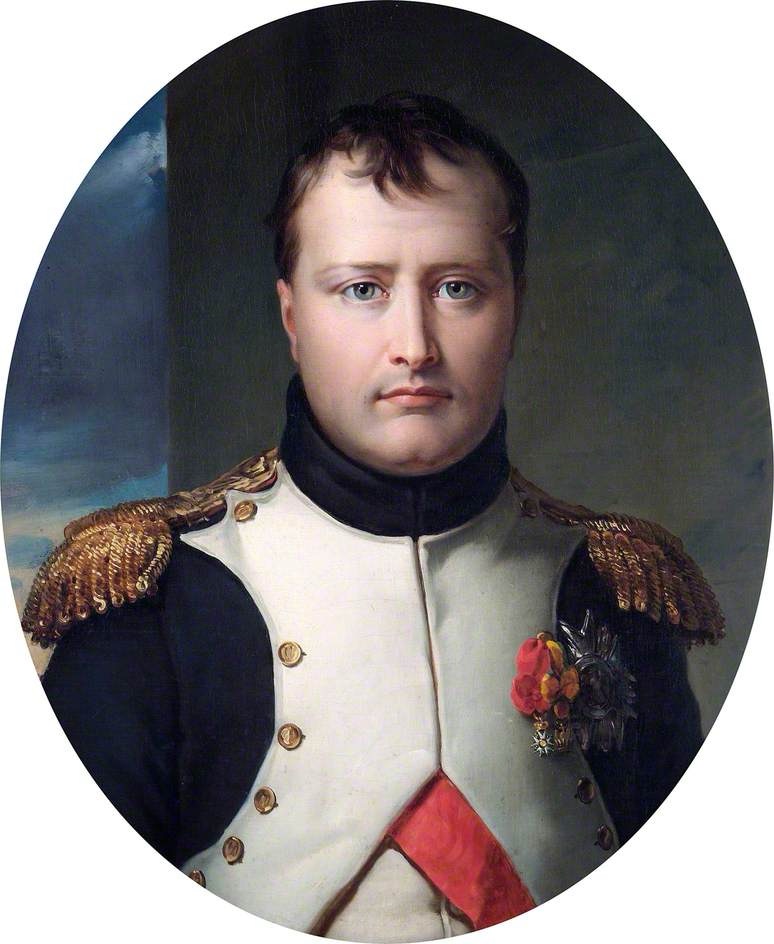
Napoleon Bonaparte, born in Corsica in 1769, rose to prominence as one of history’s most influential military and political leaders. His military genius and ambition propelled him from a relatively humble background to become Emperor of France and a dominant figure in European affairs during the early 19th century.
Napoleon’s early military successes in the French Revolutionary Wars established his reputation as a brilliant commander. He seized power through a coup d’état in 1799, becoming First Consul of France and later Emperor in 1804. Under his leadership, France experienced a period of significant reform, including the codification of laws (the Napoleonic Code), centralized administration, and the promotion of education and infrastructure development.
Napoleon’s military campaigns reshaped the political landscape of Europe. He expanded the French Empire through a series of conquests, including victories over Austria, Prussia, and Russia. However, his ambitions ultimately led to overreach, culminating in defeat in the Russian campaign of 1812 and subsequent setbacks in the Peninsular War and the Battle of Leipzig.
Defeated by the Sixth Coalition in 1814, Napoleon was exiled to the island of Elba, only to return briefly to power during the Hundred Days in 1815. His final defeat at the Battle of Waterloo marked the end of his reign and led to his second exile, this time to the remote island of Saint Helena, where he died in 1821.
Napoleon’s legacy is complex and contested. He is remembered as a military genius, a visionary reformer, and a symbol of national pride for France. However, his authoritarian rule, expansionist policies, and costly wars also brought suffering and instability to Europe. Despite his eventual downfall, Napoleon’s impact on history remains profound, shaping the course of European politics and warfare for generations to come.
15. Boadicea (c. 30–61 CE)
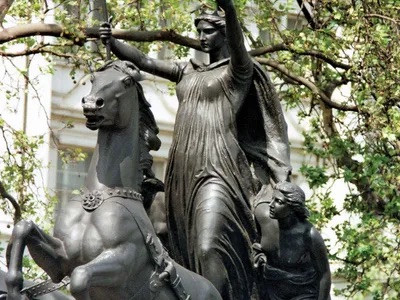
Boadicea, also known as Boudicca or Boudica, was a Celtic queen who led a famous rebellion against Roman rule in Britain around 60-61 CE. Born into the Iceni tribe in Britannia (modern-day England), Boadicea became queen after the death of her husband, King Prasutagus.
When the Romans, led by Governor Gaius Suetonius Paulinus, mistreated the Iceni and seized their lands, Boadicea rose up in defiance. Leading a coalition of tribes, including the Trinovantes, she launched a fierce rebellion against Roman rule.
Boadicea’s forces sacked the Roman settlements of Camulodunum (Colchester), Londinium (London), and Verulamium (St. Albans), inflicting heavy casualties on the Roman occupiers. Her revolt stunned the Roman Empire and posed a significant threat to Roman control in Britain.
However, despite initial successes, Boadicea’s rebellion was eventually crushed by the disciplined Roman legions. In a decisive battle, Boadicea’s forces were defeated, and she is believed to have either died in battle or taken her own life to avoid capture.
Although her rebellion ultimately failed, Boadicea’s bravery and defiance against the Roman Empire have made her a legendary figure in British history. Over the centuries, she has been celebrated as a symbol of resistance and national pride, embodying the spirit of defiance against foreign oppression. Today, Boadicea’s legacy continues to inspire stories, artwork, and commemorations in Britain.
14. Cuauhtémoc (c. 1502–1525)
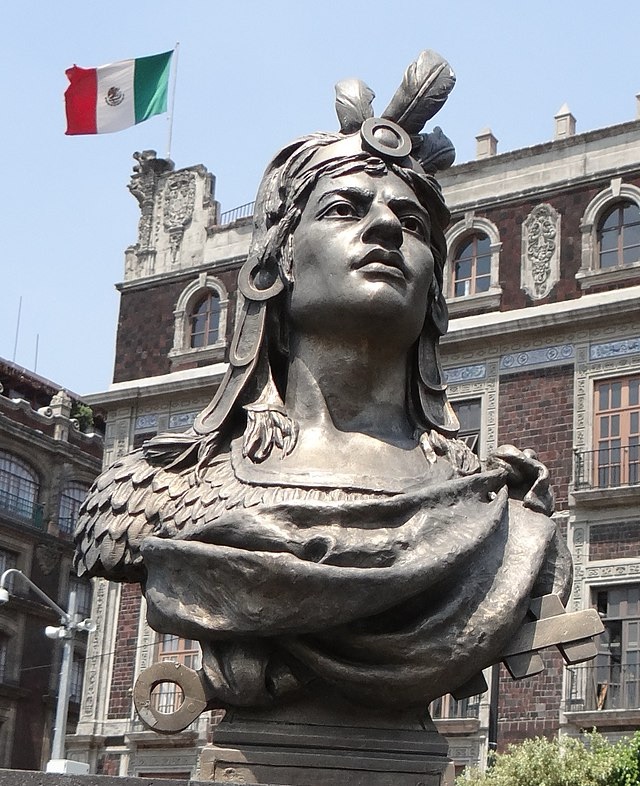
Cuauhtémoc, whose name means “Descending Eagle” in the Nahuatl language, was the last Aztec emperor, reigning from 1520 to 1521 during the tumultuous period of Spanish conquest in Mesoamerica. Born around 1502, Cuauhtémoc assumed leadership at a young age following the death of his uncle, Emperor Moctezuma II, during the early stages of the Spanish invasion led by Hernán Cortés.
Cuauhtémoc demonstrated exceptional courage and leadership in the face of overwhelming odds. He resisted the Spanish invaders fiercely, rallying his people to defend their homeland against foreign conquest. Despite facing disease, famine, and betrayal from rival indigenous groups, Cuauhtémoc continued to lead the resistance against the Spanish forces.
In 1521, after a prolonged siege, Tenochtitlan, the capital of the Aztec Empire, fell to the Spanish. Cuauhtémoc was captured by Cortés, marking the end of Aztec sovereignty. Despite being tortured in an attempt to extract information about hidden treasures, Cuauhtémoc remained defiant and refused to betray his people.
Cuauhtémoc’s bravery and determination in the face of adversity have made him a symbol of indigenous resistance and national pride in Mexico. He is revered as a hero who fought tirelessly to defend his people and their way of life against foreign invaders. Cuauhtémoc’s legacy endures as a reminder of the resilience and spirit of resistance of the indigenous peoples of Mesoamerica in the face of colonial oppression.
13. Yi Sun-sin (1545–1598)
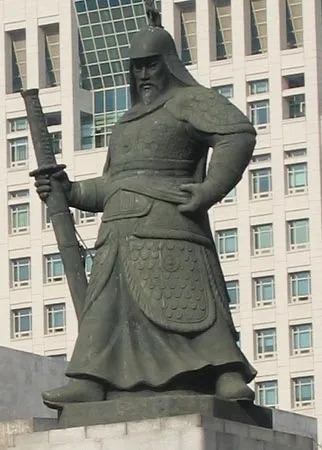
Yi Sun-sin, a legendary Korean naval commander, lived during the tumultuous late 16th century when Korea faced invasion from Japan. Born in 1545 into a noble family, Yi Sun-sin dedicated his life to serving his country and defending it from external threats.
Yi Sun-sin is most renowned for his brilliant leadership during the Imjin War (1592–1598), also known as the Japanese Invasions of Korea. Despite facing overwhelming odds, Yi Sun-sin achieved remarkable victories through his innovative naval tactics and strategic brilliance. He is best known for his invention of the “turtle ship,” a heavily armored warship with iron spikes protruding from its roof, which proved instrumental in repelling Japanese attacks.
Yi Sun-sin’s most famous victory came at the Battle of Myeongnyang in 1597, where he commanded a small fleet of 13 ships against a Japanese force of over 130 warships. Despite being outnumbered and outgunned, Yi Sun-sin’s tactical genius and indomitable spirit led to a decisive Korean victory, inflicting heavy losses on the Japanese fleet.
Throughout the war, Yi Sun-sin remained incorruptible and dedicated to the defense of his homeland. Despite facing political intrigue and betrayal from jealous rivals, he never wavered in his commitment to Korea’s cause.
Tragically, Yi Sun-sin was k!lled in action in 1598 during the Battle of Noryang, just days before the signing of the Treaty of 1598, which ended the war. His death was a significant loss for Korea, but his legacy as a national hero and symbol of resilience and patriotism endures to this day. Yi Sun-sin is revered in South Korea as one of the greatest military leaders in its history, and his contributions to Korean naval warfare have left an indelible mark on the country’s culture and identity.
12. Rani Padmini (13th century)
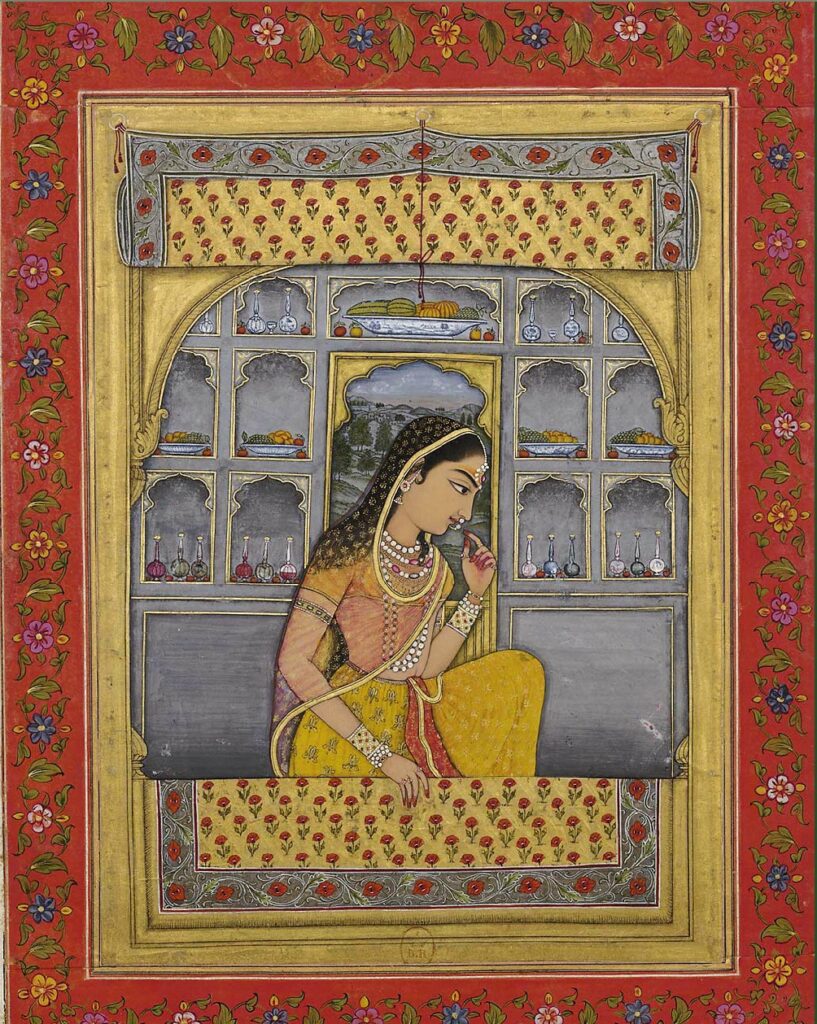
Rani Padmini, also known as Padmavati, was a legendary queen of the Rajput kingdom of Chittor, located in present-day Rajasthan, India. Her story is primarily known through the epic poem “Padmavat” written by Malik Muhammad Jayasi in the 16th century. According to legend, she was renowned for her beauty, intelligence, and courage.
Rani Padmini’s tale revolves around the siege of Chittor by Alauddin Khilji, the Sultan of Delhi, who was enamored by her beauty. Rather than submit to Khilji’s advances, Rani Padmini, along with other women of the court, committed jauhar, an act of self-immolation to avoid capture and dishonor. This event has been celebrated in Rajput folklore as an epitome of valor and sacrifice.
While the historicity of Rani Padmini is debated, her story continues to be an integral part of Indian folklore and cultural heritage, symbolizing the courage and dignity of Rajput women in the face of adversity. Numerous adaptations, including films and books, have further popularized her legend, making her an enduring figure in Indian history and literature.
11. Salah ad-Din (1137–1193)
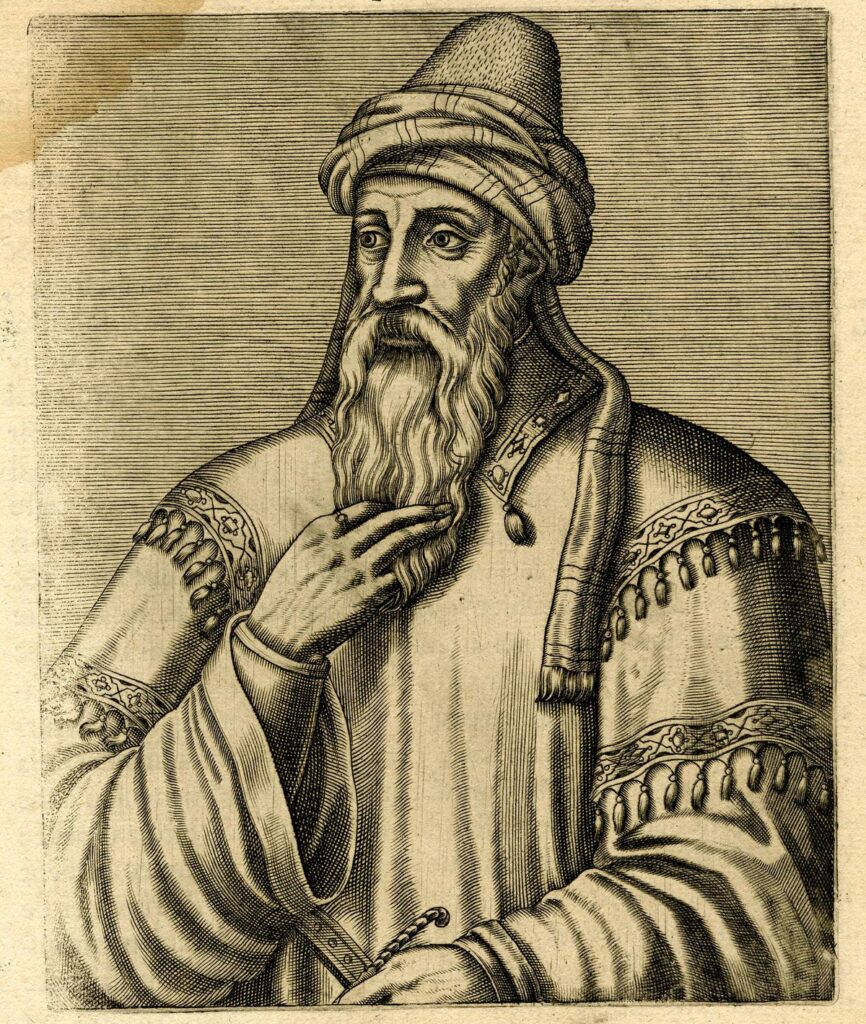
Salah ad-Din Yusuf ibn Ayyub, commonly known as Saladin, was a Kurdish Muslim military leader and statesman who rose to prominence during the 12th century. He is best known for his role in the recapture of Jerusalem from the Crusaders, as well as for his efforts to unite the Muslim world against Christian forces during the Crusades.
Born in 1137 in Tikrit, in present-day Iraq, Saladin became the Sultan of Egypt and Syria, founding the Ayyubid dynasty. He rose to power through military prowess and political acumen, eventually establishing himself as a formidable leader in the region.
One of Saladin’s most significant achievements was the recapture of Jerusalem in 1187, following the Battle of Hattin, where his forces decisively defeated the Crusader armies led by Guy of Lusignan. The fall of Jerusalem to Saladin marked a turning point in the Crusades and led to significant territorial losses for the Crusader states in the Levant.
Despite being a devout Muslim, Saladin was known for his chivalry and tolerance towards people of other faiths. He famously allowed Christian pilgrims to visit Jerusalem freely after its capture, demonstrating his commitment to religious tolerance and coexistence.
Saladin’s military campaigns and diplomatic skills earned him respect and admiration from both Muslim and Christian leaders alike. His legacy as a noble and skilled leader has endured through the centuries, with many praising his integrity, military prowess, and commitment to justice.
Saladin died in 1193 in Damascus, leaving behind a legacy as one of the most iconic figures of the medieval Middle East. His life and achievements continue to be celebrated in both Western and Islamic historiography, making him a revered figure in world history.
10. William Wallace (1270–1305)
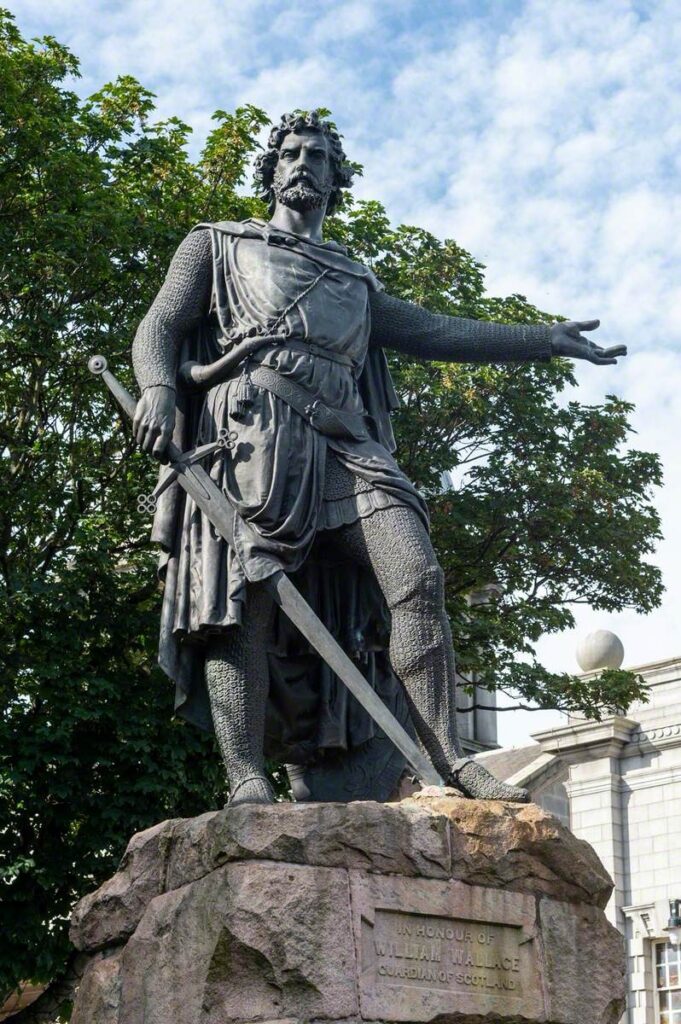
William Wallace was a Scottish knight and leader who played a crucial role in the Wars of Scottish Independence against English rule during the late 13th and early 14th centuries. Born around 1270, Wallace emerged as a prominent figure in Scotland’s struggle for independence, famously leading the Scots in several key battles against English forces.
Wallace’s rise to prominence came after the execut!on of William de Moray, a Scottish nobleman, by English forces in 1297. Enraged by this act, Wallace joined forces with Andrew de Moray, William’s cousin, to lead a rebellion against English domination. Their most notable victory came at the Battle of Stirling Bridge in September 1297, where they defeated a much larger English army led by John de Warenne, Earl of Surrey.
Following the victory at Stirling Bridge, Wallace was appointed Guardian of Scotland, effectively becoming the de facto leader of the Scottish resistance movement. He continued to lead raids and guerrilla warfare against English garrisons throughout Scotland, earning a reputation as a skilled tactician and fierce warrior.
However, Wallace’s military success was short-lived. In 1298, he suffered a significant defeat at the Battle of Falkirk against the forces of King Edward I of England. Despite the defeat, Wallace remained a symbol of Scottish resistance and continued to lead sporadic rebellions against English rule.
In 1305, Wallace was betrayed and captured by English forces near Glasgow. He was subsequently taken to London, where he was tried for treason and br*tally executed. Wallace’s execution elevated him to the status of a martyr and national hero in Scotland, and his legacy has since been immortalized in Scottish folklore, literature, and popular culture.
Although Wallace did not live to see Scotland achieve independence, his courage, determination, and sacrifice inspired future generations of Scots to continue the fight for freedom. Today, William Wallace remains an enduring symbol of Scottish resistance and national identity.
09. Attila the Hun (c. 406–453)
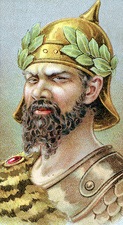
Attila the Hun was a fearsome and influential ruler who led the Hunnic Empire during the 5th century AD. He is often remembered as one of history’s most notorious conquerors, striking fear into the hearts of both the Eastern and Western Roman Empires.
Attila was born around 406 AD, the nephew of the previous Hunnic king, Rugila. Upon Rugila’s death in 434, Attila and his brother Bleda jointly assumed leadership of the Hunnic Empire. Together, they expanded their dominion across Central and Eastern Europe, exacting tribute and plunder from neighboring kingdoms and tribes.
However, after Bleda’s death in 445, Attila became the sole ruler of the Huns. Under his leadership, the Hunnic Empire reached its zenith, stretching from the Caspian Sea to the Rhine River. Attila’s military campaigns were relentless and devastating, earning him the nickname “The Scourge of God.”
One of Attila’s most famous campaigns was his invasion of the Eastern Roman Empire in the early 5th century. In 451, he launched an assa*lt on the Eastern Roman city of Constantinople but was ultimately repelled. The following year, he turned his sights westward, invading Gaul (modern-day France) and ravaging the countryside. However, his advance was halted by a combined Roman and Visigothic force at the Battle of the Catalaunian Plains.
Despite this setback, Attila remained a formidable threat to the Roman Empire. In 452, he launched another invasion of Italy, sacking several cities including Aquileia and Milan. Legend has it that he was deterred from sacking Rome itself by the intervention of Pope Leo I, who persuaded him to spare the city.
Attila died suddenly in 453, possibly as a result of a nosebleed on his wedding night. With his death, the unity of the Hunnic Empire dissolved, and the Huns eventually faded from prominence. However, Attila’s legacy as a ruthless conqueror and scourge of the Roman Empire has endured through the ages, making him one of history’s most infamous figures.
08. Vlad the Impaler (1431–1476)
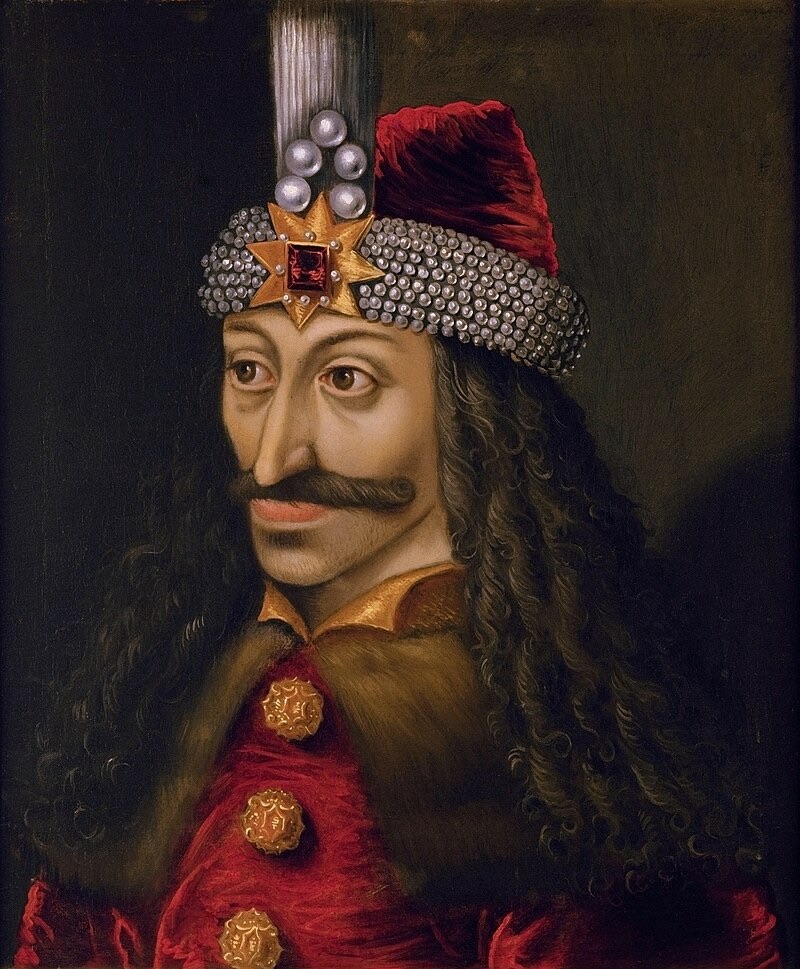
Vlad III, commonly known as Vlad the Impaler or Vlad Dracula, was a 15th-century ruler of Wallachia, a region in modern-day Romania. He earned his notorious nickname due to his favored method of execut!on:!impalement.
Vlad’s reign was marked by brutal!ty and a fierce resistance against the Ottoman Empire. His tactics, including !mpalement and psychological warfare, struck fear into his enemies. While often depicted as a villain in folklore and literature, Vlad’s cru*lty was in part a response to the constant threat of invasion.
He remains a complex figure, admired by some for his resistance to foreign aggression and reviled by others for his extreme methods. Bram Stoker’s “Dracula” drew inspiration from Vlad’s reputation, immortalizing him as a figure of horr*r in popular culture.
07. Richard the Lionheart (1157–1199)
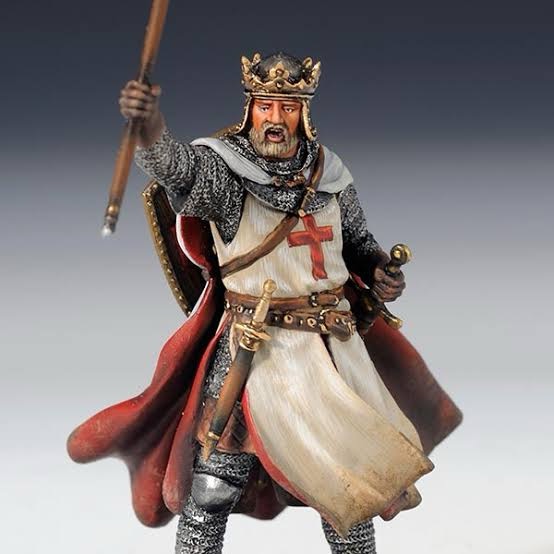
Richard the Lionheart, also known as Richard I, was a medieval king of England who ruled from 1189 until his death in 1199. He earned his epithet “Lionheart” due to his valor and prowess in battle, particularly during the Third Crusade. Richard was a skilled military leader and participated actively in the Crusades, aiming to recapture Jerusalem from Saladin, the Sultan of Egypt and Syria.
His military campaigns and leadership were characterized by bravery and strategic acumen, although he faced challenges in maintaining control over his vast territories, often leaving England to finance his expeditions. Richard’s absence allowed his brother John to consolidate power and caused tension within the realm.
Despite his legendary status as a warrior king, Richard spent only a fraction of his reign in England, focusing instead on crusading and conflicts in France. His reputation as a chivalrous and heroic figure has endured through literature and folklore, cementing his place in history as one of England’s most celebrated monarchs.
06. Samurai Miyamoto Musashi (1584–1645)
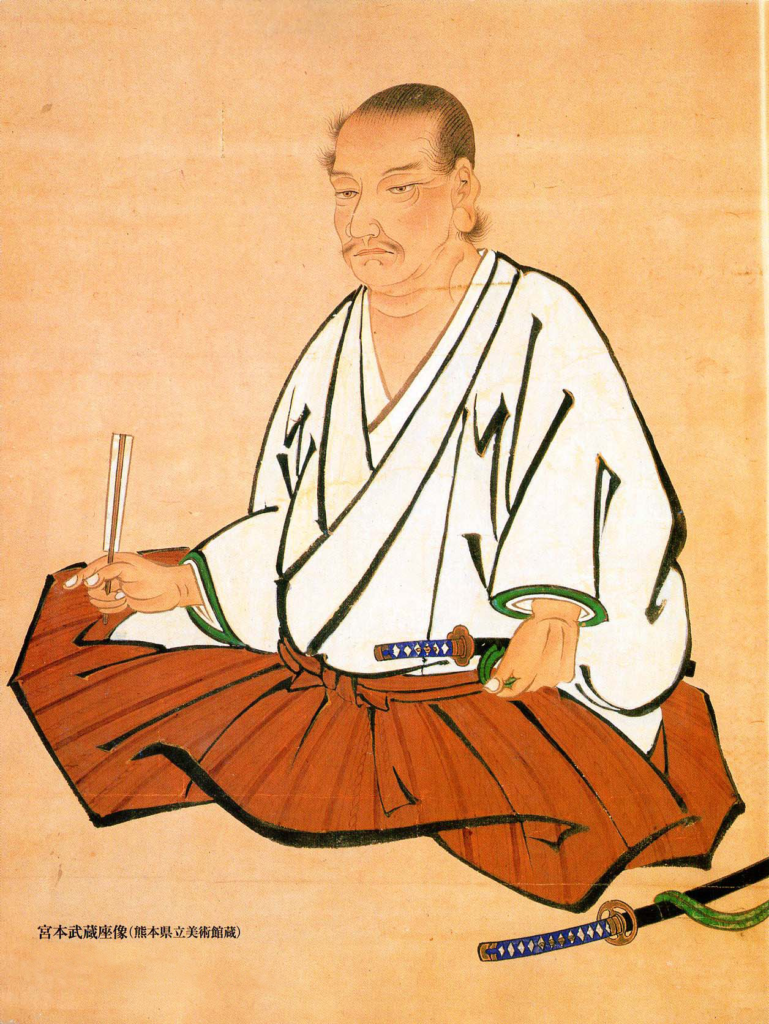
Miyamoto Musashi was a legendary Japanese swordsman, philosopher, and strategist who lived during the 17th century. Born in 1584, Musashi became renowned for his exceptional skill in swordsmanship, winning numerous duels and battles throughout his life. He developed his own unique style of combat, known as Niten Ichi-ryu, which emphasized the use of two swords simultaneously.
Musashi’s most famous duel was against Sasaki Kojiro in 1612 on the island of Ganryujima. Despite being significantly younger and less experienced than his opponent, Musashi defeated Kojiro using a wooden sword he hastily crafted from an oar. This victory solidified Musashi’s reputation as one of the greatest swordsmen in Japanese history.
In addition to his martial prowess, Musashi was also a philosopher and artist. He wrote “The Book of Five Rings” (Go Rin No Sho), a treatise on strategy, tactics, and philosophy, which is still studied today by martial artists, businessmen, and military leaders alike.
Throughout his life, Musashi pursued self-improvement and spiritual enlightenment, often seeking solitude in nature to reflect on his experiences. He lived according to his own code of conduct, valuing personal integrity, discipline, and perseverance.
Miyamoto Musashi’s legacy continues to inspire admiration and fascination worldwide, with his teachings on strategy and philosophy transcending the realm of martial arts to influence various aspects of modern life. He remains a revered figure in Japanese culture and a symbol of excellence in the martial arts.
05. Hannibal Barca (247–183/181 BCE)
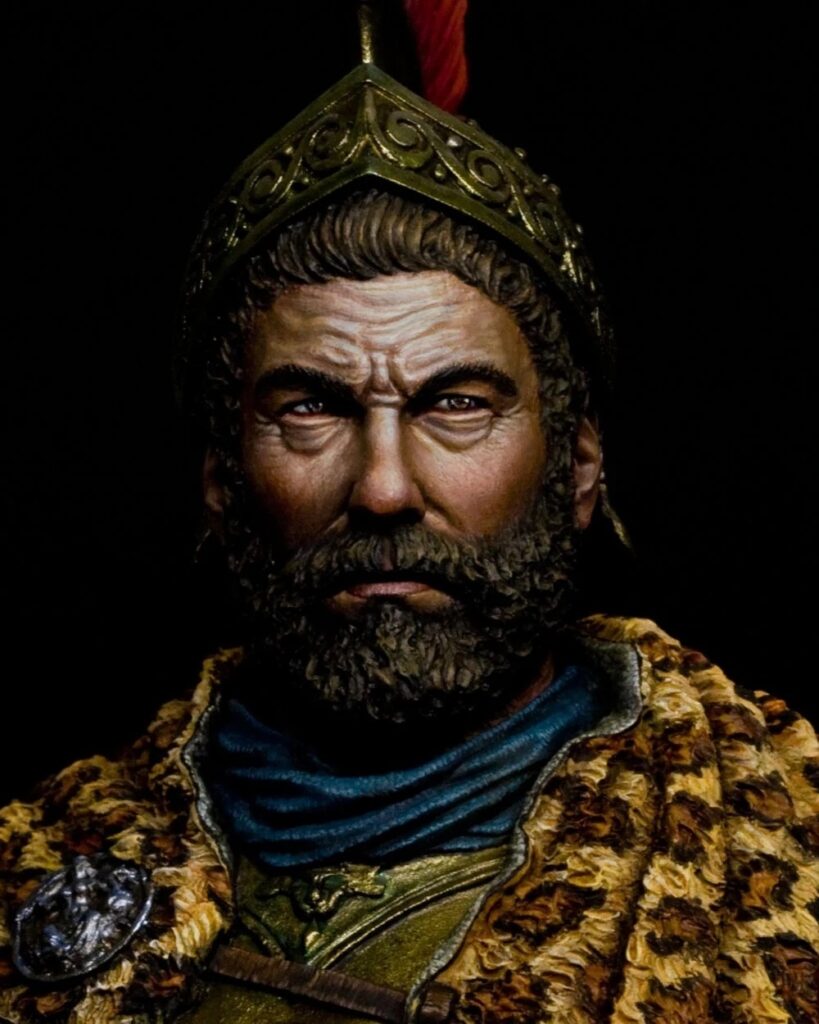
Hannibal Barca was a Carthaginian military commander born in 247 BC. He is best known for his audacious military campaigns against Rome during the Second Punic War, which took place between 218 and 201 BC.
Hannibal’s most famous feat was his crossing of the Alps with a large army, including war elephants, to invade Italy in 218 BC. This bold maneuver caught the Romans off guard and demonstrated Hannibal’s strategic brilliance and determination. Despite facing significant logistical challenges and harsh conditions, Hannibal managed to lead his forces through the treacherous mountain terrain and into Italy.
In Italy, Hannibal won several impressive victories against the Romans, including the battles of Trebia, Lake Trasimene, and Cannae. These victories inflicted heavy casualties on the Roman armies and shook the confidence of the Roman Republic. Hannibal’s tactical innovations, such as the use of double envelopment at the Battle of Cannae, are still studied by military historians today.
However, despite his military successes, Hannibal ultimately failed to capitalize fully on his victories and bring about the downfall of Rome. The Roman strategy of attrition, combined with internal political divisions within Carthage, gradually weakened Hannibal’s position. Additionally, the Romans were able to adapt their tactics and strategies to counter Hannibal’s unconventional methods.
After the Battle of Zama in 202 BC, where he was decisively defeated by the Roman general Scipio Africanus, Hannibal’s influence waned, and he spent the remainder of his life in exile. He later became involved in politics and military affairs in various Mediterranean regions, but his dream of defeating Rome remained unfulfilled.
Hannibal’s military genius, daring tactics, and ability to inspire loyalty among his troops have earned him a lasting legacy as one of history’s greatest military commanders. His campaigns against Rome continue to be studied for their strategic brilliance and tactical innovation, making Hannibal Barca a legendary figure in the annals of military history.
04. Joan of Arc (1412–1431)
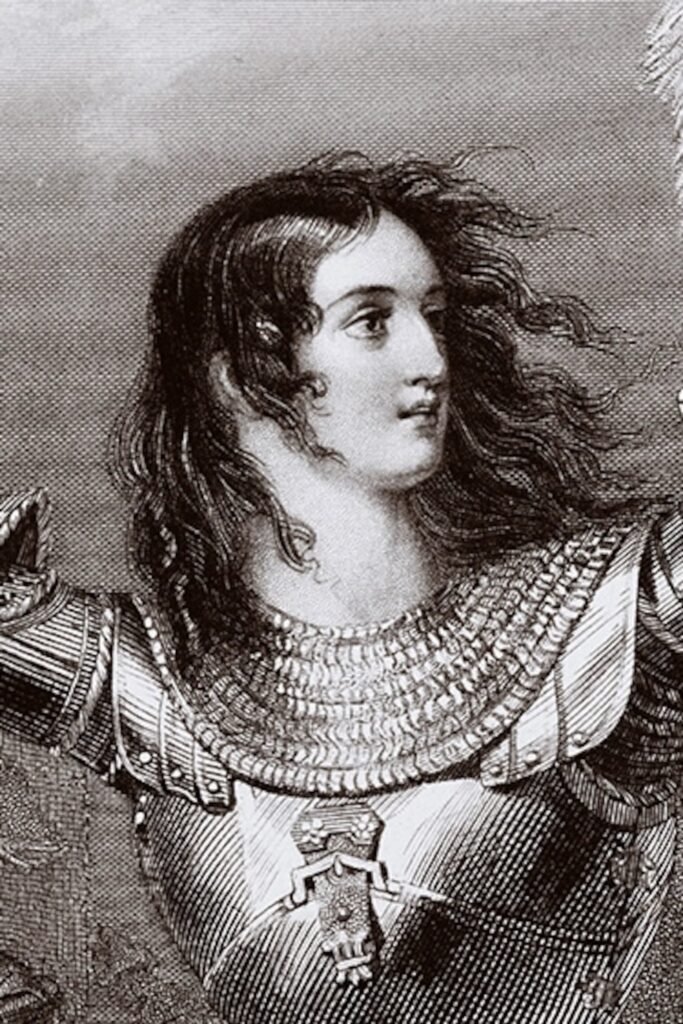
Joan of Arc, also known as Jeanne d’Arc, was a French peasant girl who, at the age of 17, played a pivotal role in the Hundred Years’ War between France and England. Born in Domrémy, France, in 1412, Joan began to experience visions and hear voices from saints, urging her to support Charles VII and help liberate France from English domination.
In 1429, Joan convinced local authorities to grant her permission to join the French army. Dressed in armor and carrying a banner emblazoned with the image of Jesus and the words “Jesus Maria,” Joan led French troops to several victories against the English. Her most significant triumph was the lifting of the siege of Orléans, a turning point in the war that boosted French morale and paved the way for Charles VII’s coronation.
Joan’s military successes earned her the nickname “The Maid of Orléans” and made her a symbol of French resistance. However, in 1430, she was captured by Burgundian forces, allies of the English, and sold to the English. After a politically motivated trial, she was convicted of heresy and witchcraft and burned at the stake in Rouen in 1431, at the age of 19.
Joan of Arc’s bravery, piety, and unwavering devotion to her cause captured the imagination of the French people and secured her a place in history as a national heroine. In 1456, a posthumous retrial declared her innocent of all charges, and she was canonized as a saint by the Catholic Church in 1920. Joan of Arc remains an enduring symbol of courage, faith, and patriotism, revered not only in France but also around the world.
03. Leonidas I (c. 540–480 BCE)
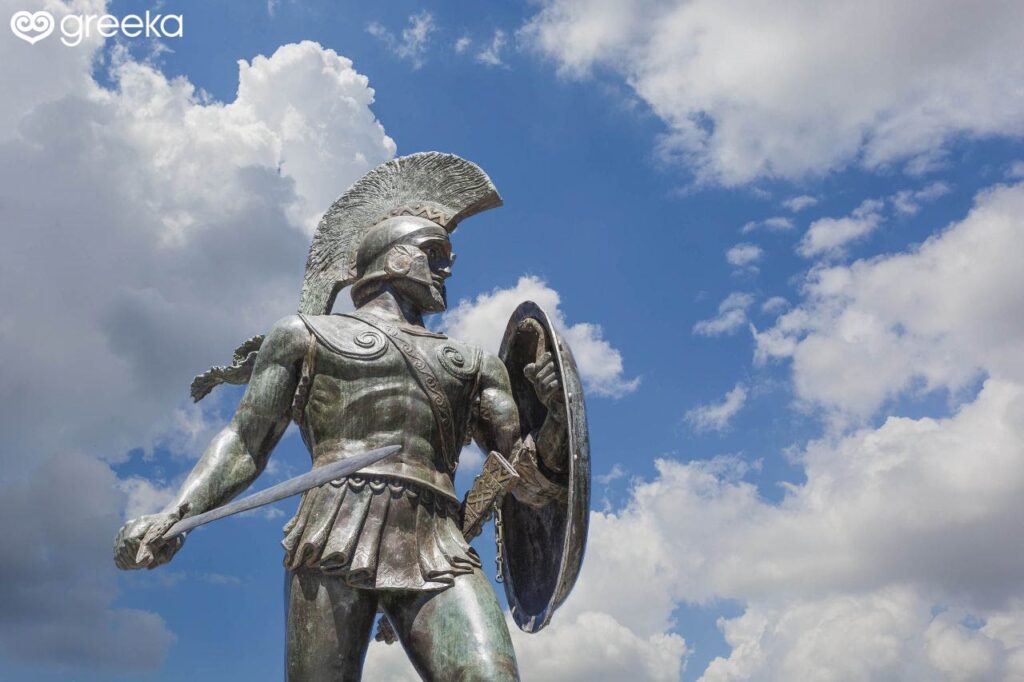
Leonidas I was a Spartan king who lived during the 5th century BC. He is best known for his leadership during the Battle of Thermopylae in 480 BC, where he and a small force of Spartans and allies faced the massive Persian army led by King Xerxes I.
In 480 BC, Xerxes launched a massive invasion of Greece, seeking to expand the Persian Empire further into Europe. Leonidas, recognizing the strategic importance of the narrow pass at Thermopylae, led a small contingent of around 7,000 Greek soldiers, including 300 elite Spartan warriors, to defend the pass against the Persian advance.
For three days, Leonidas and his troops held off wave after wave of Persian attacks, inflicting heavy casualties on the enemy despite being vastly outnumbered. Their bravery and determination bought crucial time for the rest of Greece to prepare for the Persian invasion.
Ultimately, a local Greek traitor led the Persians through a mountain path that bypassed the Greek position at Thermopylae. Realizing that their position was no longer defensible, Leonidas and his Spartan warriors fought to the death in a final stand against the overwhelming Persian forces.
The sacrifice of Leonidas and his men at Thermopylae became legendary, symbolizing the epitome of courage, self-sacrifice, and defiance against tyranny. Their heroic last stand inspired Greeks and later generations to resist foreign aggression and uphold the values of freedom and independence.
Leonidas’ legacy continues to resonate in modern culture, with countless books, films, and works of art depicting his bravery and the Battle of Thermopylae. He remains one of history’s most revered military leaders, embodying the Spartan ethos of discipline, courage, and loyalty to the last breath.
02. Genghis Khan (1162–1227)
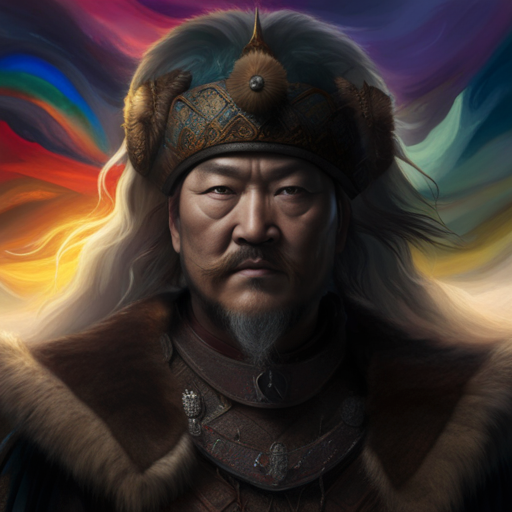
Genghis Khan, born as Temüjin in 1162, was the founder and first Great Khan of the Mongol Empire, which became the largest contiguous empire in history. Rising from humble beginnings, Temüjin united the disparate Mongol tribes through diplomacy, military conquests, and strategic alliances.
After enduring a turbulent childhood marked by the m*rder of his father and the subsequent exile of his family, Temüjin began his rise to power by consolidating the Mongol tribes under his leadership. He demonstrated remarkable military prowess and political cunning, defeating rival tribes and earning the loyalty of his followers through charisma and strategic vision.
In 1206, Temüjin was proclaimed Genghis Khan, meaning “universal ruler,” by a council of Mongol chiefs. Under his leadership, the Mongol Empire embarked on a series of military campaigns that would eventually conquer vast territories spanning from China to Eastern Europe.
Genghis Khan’s military strategy was characterized by speed, flexibility, and ruthl*ssness. He pioneered innovative tactics, such as the use of feigned retreats, psychological warfare, and siege warfare, which allowed the Mongols to overcome numerically superior opponents.
Despite his reputation as a fearsome warrior and conqueror, Genghis Khan was also a shrewd statesman and administrator. He implemented administrative reforms, promoted religious tolerance, and established a code of laws known as the Yassa, which governed all aspects of Mongol society.
Genghis Khan’s legacy is complex and multifaceted. While he is often portrayed as a brutal conqueror responsible for widespread destruction and loss of life, he also played a significant role in fostering cultural exchange, trade, and the spread of ideas across Eurasia.
Today, Genghis Khan is remembered as one of history’s most influential figures, whose impact on world history is undeniable. His legacy continues to shape the geopolitics and cultural landscape of Eurasia, leaving an indelible mark on the course of human civilization.
01. Alexander the Great (356–323 BCE)
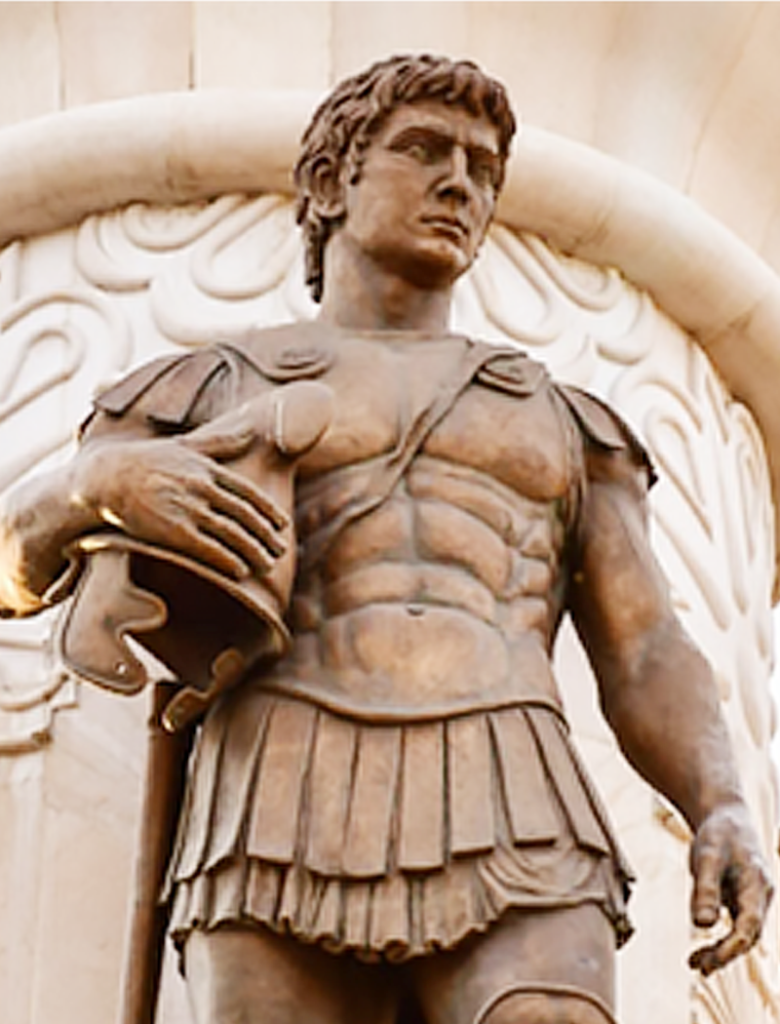
Alexander the Great, born in 356 BC in Pella, Macedonia, was one of history’s most renowned military leaders and conquerors. He ascended to the throne of Macedonia at the age of 20, following the assass!nation of his father, King Philip II.
From an early age, Alexander displayed exceptional leadership qualities and military prowess. He was tutored by the philosopher Aristotle, who instilled in him a love for learning, philosophy, and culture. Inspired by the epic tales of Greek heroes like Achilles, Alexander dreamed of emulating their feats of valor and glory.
In 334 BC, at the age of 22, Alexander launched his ambitious campaign to conquer the Persian Empire, then the largest empire in the world. Leading a highly trained and disciplined army, Alexander achieved a series of stunning victories against the Persians, including the battles of Granicus, Issus, and Gaugamela.
Alexander’s military genius was characterized by boldness, speed, and strategic brilliance. He employed innovative tactics and formations, such as the phalanx and cavalry charges, to outmaneuver and defeat his opponents. His leadership and charisma inspired unwavering loyalty among his soldiers, who followed him on his epic conquests across Asia.
By the age of 30, Alexander had conquered an empire stretching from Greece to Egypt and into Persia, encompassing millions of square miles and diverse cultures. His empire became a melting pot of Greek, Persian, Egyptian, and other civilizations, fostering cultural exchange, trade, and the spread of Greek culture, known as Hellenism.
Despite his military success, Alexander’s reign was marked by controversy and tragedy. He faced numerous challenges, including mut!nies among his troops, political intrigue, and the constant threat of assass!nation. In 323 BC, at the age of 32, Alexander died suddenly in Babylon under mysterious circumstances, leaving behind a legacy that would endure for centuries.
Alexander the Great’s conquests transformed the course of history, shaping the geopolitical landscape of the ancient world and laying the foundation for the spread of Greek culture and civilization. He is remembered as one of history’s most influential figures, whose legacy continues to inspire admiration, fascination, and debate to this day.
